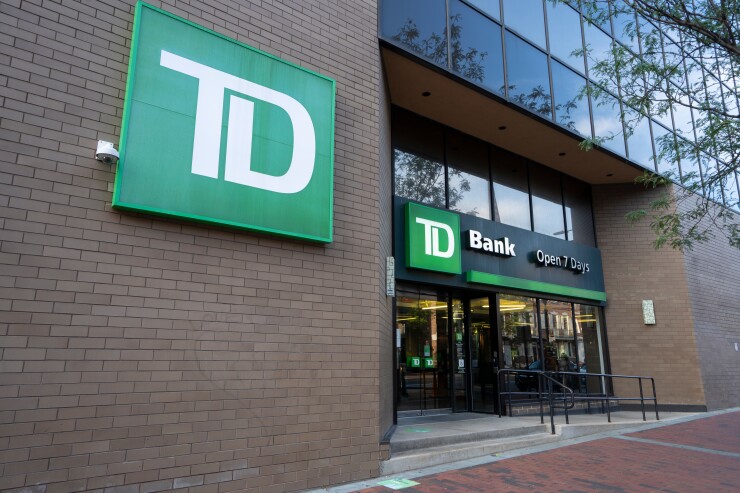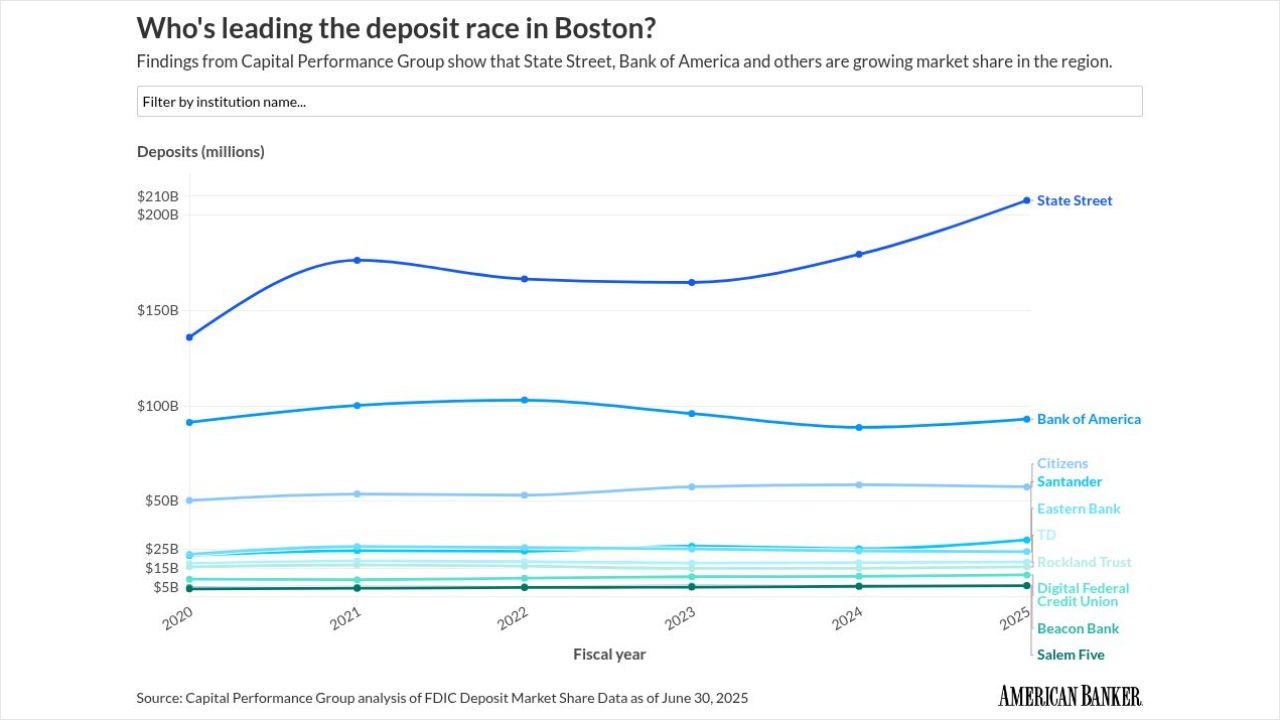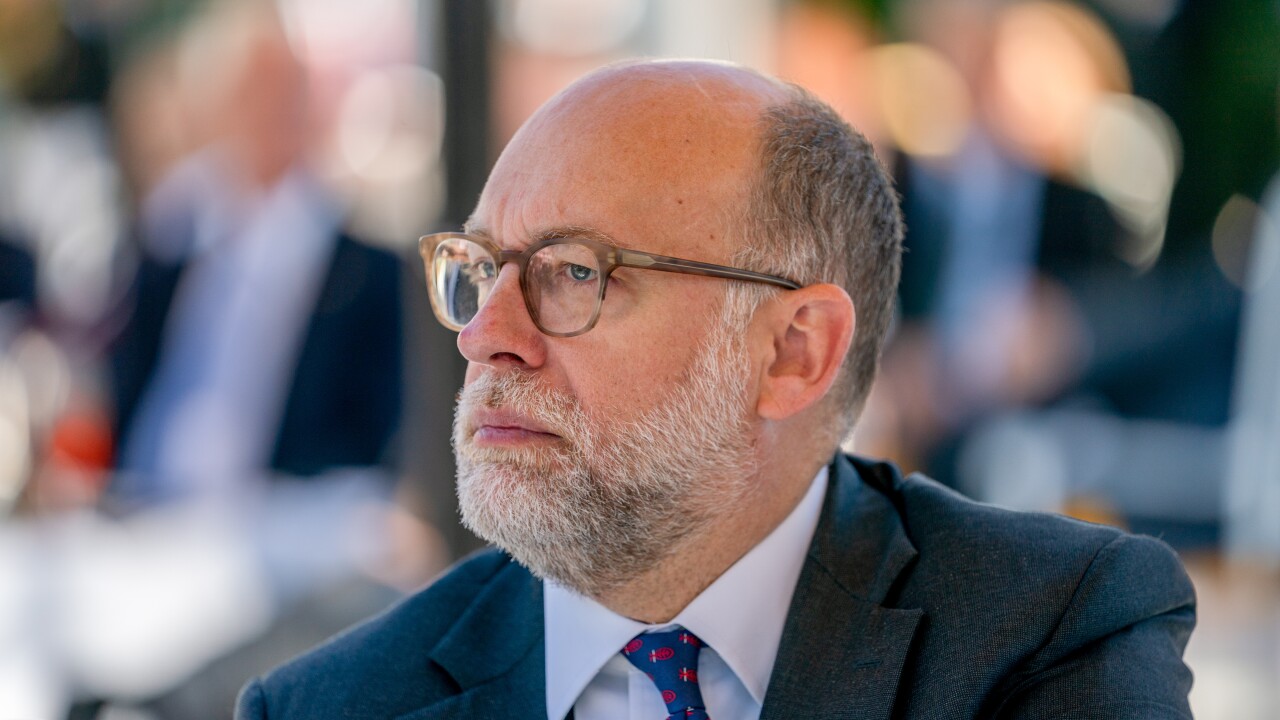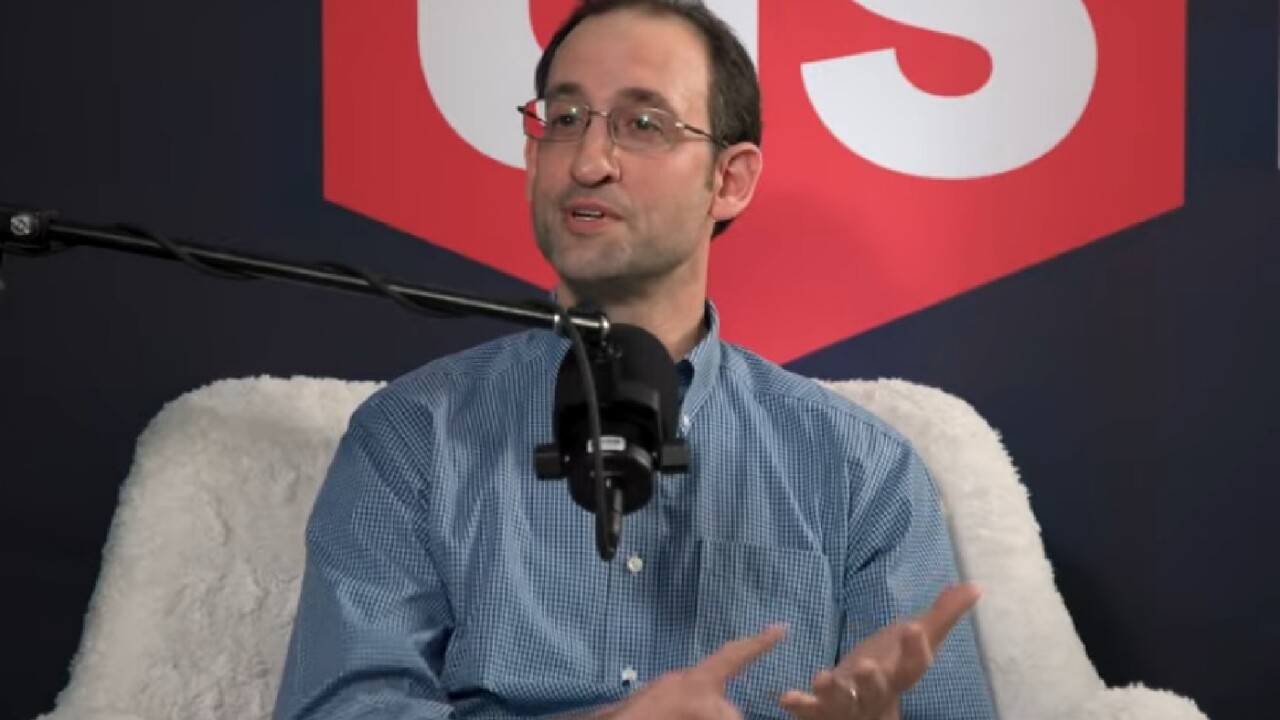
UPDATE: This article includes information about TD's new restructuring plan, the impact of tariffs on the bank and comments from analysts.
TD Bank Group plans to invest $1 billion over a two-year period to beef up its anti-money-laundering controls, after compliance failures led to historic regulatory penalties and handcuffed its U.S. growth.
The herculean compliance overhaul is TD's top priority, executives said Thursday, as the Toronto-based bank also juggles a new restructuring plan, the
"While we still have work to do, we remain on track with our planned remediation activities and are building the foundational AML program that we need for the years ahead," said Leo Salom, who leads TD's U.S. banking operations, on a call with analysts.
In October, TD agreed to pay $3.1 billion in penalties and was ordered to
The company had previously projected spending $500 million on anti-money-laundering remediation efforts during the fiscal year that ends in October, as it upgrades its training, analysis capabilities and protocols. On Thursday, TD Chief Financial Officer Kelvin Tran told analysts that the bank expects similar investments in the fiscal year that ends in October 2026.
Salom said during the call that he thinks the bank is making progress.
"We wanted to give the Street a sense of what 2026 was going to look like," Salom said. "The composition of spend might change a little bit. It might be a little less remediation, more validation work, more lookbacks, monitor costs, et cetera. ... But we think the overall spend level is going to be similar."
Across the first two quarters of 2025, the bank has invested $196 million on the anti-money-laundering compliance efforts.
Salom said there will be an uptick in those expenses in the back half of the year as the company delves "into the meat of our remediation delivery programs." TD plans to deploy machine learning technology in the third quarter to "increase investigative productivity," along with additional reporting and controls for cash management activities.
The bank feels confident about its expense guidance for 2025 and 2026, and those costs will eventually decline "at some point in the future," Salom said.
TD also said Thursday that it's on track to meet its previous projection of a 10% reduction in U.S. assets by the end of October. At the end of April, the U.S. bank had about $399 billion of assets, putting it below the $434 billion cap imposed by the Office of the Comptroller of the Currency.
The bank sold or ran off about $11 billion in U.S. loans during the second quarter, and announced plans to wind down a $3 billion point-of-sale financing business that services third party retailers in the U.S.
The bank expects to generate a benefit to net interest income of close to $500 million between November 2024 and October 2025, he said.
While anti-money-laundering efforts have
The bank reeled in adjusted earnings per share of Canadian dollars $1.97, compared with analyst consensus of CA$1.78. Those results didn't include a major gain from the
TD's stock price was up 3.84%, to $67.24, as of Thursday afternoon.
"We think new CEO Raymond Chun is putting the bank on the right track," wrote Maoyuan Chen, an equity analyst at Morningstar, in a note. "2025 will be a transitional year as TD is actively remediating its US anti-money-laundering system with elevated expenses and repositioning its US balance sheet for its asset cap growth limitations."
Building 'the bank for the future'
TD said Thursday it has launched a new restructuring plan to optimize real estate, wind down some businesses and cut 2% of its global workforce.
The program, which is separate from the anti-money-laundering remediation and the U.S. balance sheet overhaul, comes with a $600 million to $700 million price tag over the next few quarters. Tran said the bank is aiming to trim its headcount through attrition, when possible.
The reorganization will deliver $550 million to $650 million in annual cost savings, TD said. For the 2025 fiscal year, the bank expects about $100 million in pretax savings from the efforts.
"We are undertaking a restructuring program to reduce structural costs and create capacity to invest to build the bank for the future," Tran said. "Through this restructuring program and the strategic review more broadly, we are innovating to drive efficiency and structurally reduce the bank's cost base."
TD CEO Raymond Chun said the flexibility created by the restructuring will help accelerate digital and AI investments and allow the company to scale relationship banking.
Tariffs from across the border
Similar to U.S. banks, TD's business clients are holding off on making strategic decisions amid an array of unknowns that have been driven by trade policy, Chun said. The recent environment has "created economic distortions," such as inventory stockpiling and purchases being pulled forward, he said.
"Despite a recent tariff deescalation between the U.S. and China that's temporary in nature, there continues to be a high degree of macroeconomic and policy uncertainty," Chun said. "This fluid environment has also driven volatility in capital markets, and created angst for some households."
Still, the Canadian government's work to spur business activity, like eliminating interprovincial trade barriers, are encouraging, said the bank's newly minted CEO. Chun took the helm on Feb. 1 following former CEO Bharat Masrani's
During the most recent quarter, TD kept its allowance for credit losses flat from the previous three months at CA$9.6 billion.
"The decline in TD's impaired loan provisions is a positive, but [TD] does run the risk of potentially being light on its performing reserve build," Jefferies analyst John Aiken said in a research note.
TD said that across its CA$963 billion portfolio, about 9% of loans are in industries most exposed to policy and trade risk, like the automotive, agriculture and certain manufacturing sectors.
Loans that are especially sensitive to tariff risks represent less than 1% of the bank's total book, Chief Risk Officer Ajai Bambawale said. TD maintained its previous guidance for its provision for credit losses in 2025.
Bambawale said that he thinks the bank is well reserved, but noted that "the situation is fluid."
"The ultimate credit impact will depend on a range of factors, including the magnitude and duration of tariffs and government stimulus," Bambawale said. "We will continue to work closely with our customers through these challenging conditions."






